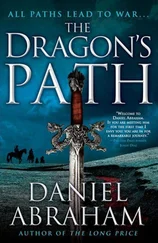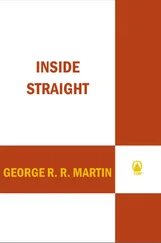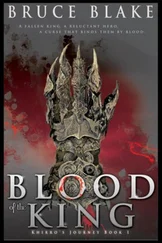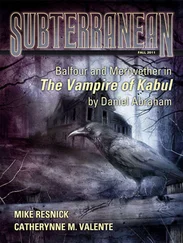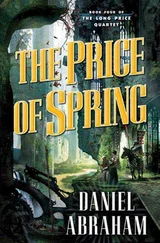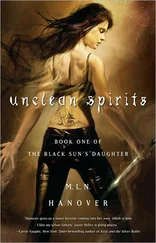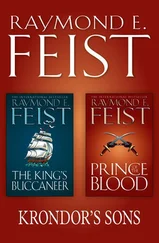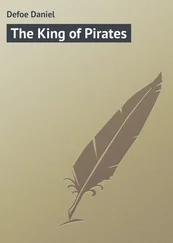“Have you just told me that you don’t know where this place is?”
“I do. It’s on the north shore of Lyoneia,” Kit said. “Probably.”
Marcus closed his eyes.
“You don’t know.”
“I could be more precise, but I think I’d be less accurate,” Kit said. “I believe there’s a word for reliquaries that are easily found and commonly known.”
“Is the word empty ?”
“All words are empty, until a living will fills them,” Kit said. “But yes. I’d been thinking more of looted .”
“You could have told me before.”
“Would it have made a difference?”
“Yes,” Marcus said, and they both knew he was lying.
Dramatis Personae
Persons of interest and import in The King’s Blood
IN IMPERIAL ANTEA
The Royal Family
King Simeon, Emperor of Antea
Aster, his son and heir
House Palliako
Lehrer Palliako, Viscount of Rivenhalm
Geder Palliako, his son. Also Baron of Ebbingbaugh and Protector of the Prince
House Kalliam
Dawson Kalliam, Baron of Osterling Fells
Clara Kalliam, his wife
Barriath
Vicarian, and
Jorey; their sons
also various servants and slaves, including
Andrash rol Estalan, door slave to House Kalliam
Vincen Coe, huntsman in the service of House Kalliam
Abatha Coe, his cousin
House Skestinin
Lord Skestinin, master of the Imperial Navy
Lady Skestinin, his wife
Sabiha, their somewhat disgraced daughter
her illegitimate son
House Annerin
Elisia Annerin (formerly Kalliam), daughter of Clara and Dawson
Gorman Annerin, son and heir of Lord Annerin and husband of Elisia
Corl, their son
House Daskellin
Canl Daskellin, Baron of Watermarch and Ambassador to Northcoast
Sanna, one of his daughters
Also, various lords and members of the court, including
Lord Ternigan, Lord Marshal to King Simeon
Sodai Carvenallin, his secretary
Sir Curtin Issandrian
Sir Alan Klin
Sir Gospey Allintot
Sir Lauren Essian
Sir Soluz Veren
Sir Sesil Veren
Fallon Broot, Baron of Suderling Heights
Daved Broot, his son
Lord Bannien of Estinford
Count Odderd Mastellin
Estin Cersillian, Earl of Masonhalm
Mirkus Shoat, Earl of Rivencourt
and also Houses Flor, Estinford, Faskellan, Emming, Tilliakin, Mastellin, Mecilli, Caot, and Pyrellin, among others
The Players
Kitap rol Keshmet, called Master Kit, apostate of the spider goddess
Cary
Hornet
Smit
Charlit Soon
Mikel
Sandr
Basrahip, minister of the spider goddess and counselor to Geder Palliako
also some dozen priests
IN BIRANCOUR
The Medean bank in Porte Oliva
Cithrin bel Sarcour, voice of the Medean bank in Porte Oliva
Pyk Usterhall, her notary
Marcus Wester, her guard captain. Also the hero of Gradis and Wodford
Yardem Hane, his second in command
The bank’s guard, including:
Barth
Corisen Mout
Ahariel Akkabrian
Roach
Hart
Enen
Iderrigo Bellind Siden, Prime Governor of Porte Oliva
Qahuar Em, rival to the Medean bank and former lover of Cithrin
Arinn Costallin, his business acquaintance from Herez
Maestro Asanpur, a café owner
Capsen Gostermak, a poet and keeper of doves
Maceo Rinál, a pirate
Dar Cinlama, a hunter of ancient treasures and seeker of lost places
IN NORTHCOAST
King Tracian
The Medean bank in Carse
Komme Medean, head of the Medean bank
Lauro Medean, son of Komme
Chana Medean, daughter of Komme
Paerin Clark, husband of Chana
Magister Nison, voice of the Medean bank in Carse
IN ASTERILHOLD
King Lechan
Sir Darin Ashford, ambassador to Antea
IN SUDDAPAL
Epetchi, a cook
Adasa Orsun, a sea captain
THE DEAD
Feldin Maas, formerly Baron of Ebbingbaugh, killed for treason
Phelia Maas, his wife, dead at her husband’s hand
Magister Imaniel, voice of the Medean bank in Vanai and protector of Cithrin
also Cam, a housekeeper, and
Besel, a man of convenience, burned in the razing of Vanai
Alys, wife of Marcus Wester
also Merian, their daughter, burned to death as a tactic of intrigue
Lord Springmere, the Mayfly King, killed in vengeance
Morade, the last Dragon Emperor, said to have died from wounds
Inys, clutch-mate of Morade whose manner of death is not recorded
Asteril, clutch-mate of Morade, maker of the Timzinae, dead of poison
Drakkis Stormcrow, great human general of the last war of the dragons, dead of age
An Introduction to the Taxonomy of Races
(From a manuscript attributed to Malasin Calvah, Taxonomist to Kleron Nuasti Cau, fifth of his name)
The ordering and arrangements of the thirteen races of humanity by blood, order of precedence, mating combination, or purpose is, by necessity, the study of a lifetime. It should occasion no concern that the finer points of the great and complex creation should seem sometimes confused and obscure. It is the intent of this essay to introduce the layman to the beautiful and fulfilling path which is taxonomy.
I shall begin with a brief guide to which the reader may refer.
Firstblood
The Firstblood are the feral, near-bestial form from which all humanity arose. Had there been no dragons to form the twelve crafted races from this base clay, humanity would have been exclusively of the Firstblood. Even now, they are the most populous of the races, showing the least difficulty in procreation, and spreading throughout the known world as a weed might spread through a rose garden. I intend no offense by the comparison, but truth knows no etiquette.
The Eastern Triad
The oldest of the crafted races form the Eastern Triad: Jasuru, Yemmu, and Tralgu.
The Jasuru are often assumed to be the first of the higher races. They share the rough size and shape of the Firstblood, but with the metallic scales of lesser dragons. Most likely, they were created as a rough warrior caste, overseers to control the Firstblood slaves.
The Yemmu are clearly a later improvement. Their great size and massive tusks could only have been designed to intimidate the lesser races, but as with other examples of crafted races, the increase in size and strength has come at a cost. Of all the races, the Yemmu have the shortest natural lifespan.
The Tralgu are almost certainly the most recent of the Eastern Triad. They are taller than the Firstblood and with the fierce teeth and keen hearing of a natural carnivore, and common wisdom holds that they were bred for hunting more than formal battle. In the ages since the fall of dragons, it is likely only their difficulty in whelping that has kept them from forcible racial conquest.
The Western Triad
As the Eastern Triad marks an age of war in which races were created as weapons of war, the western races delineate an age in which the dragons began to create more subtle tools. Cinnae, Dartinae, and Timzinae each show the marks of creation for specific uses.
The Cinnae, when compared to all other races, are thin and pale as sprouts growing under a bucket. However, they have a marked talent in the mental arts, though the truly deep insights have tended to escape them. As the Jasuru are a first attempt at a warrior caste, so the Cinnae may be considered as a rough outline of the races that follow them.
Читать дальше

